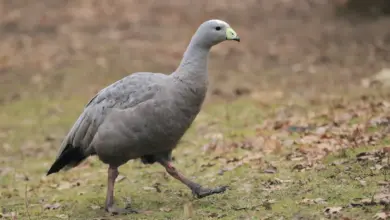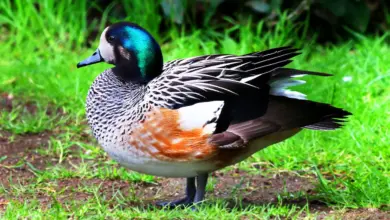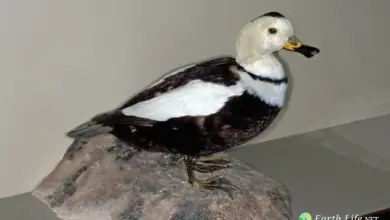The Red-breasted Geese (Branta ruficollis) is a European goose with a moderately small and declining population. This species is currently listed as Endangered.
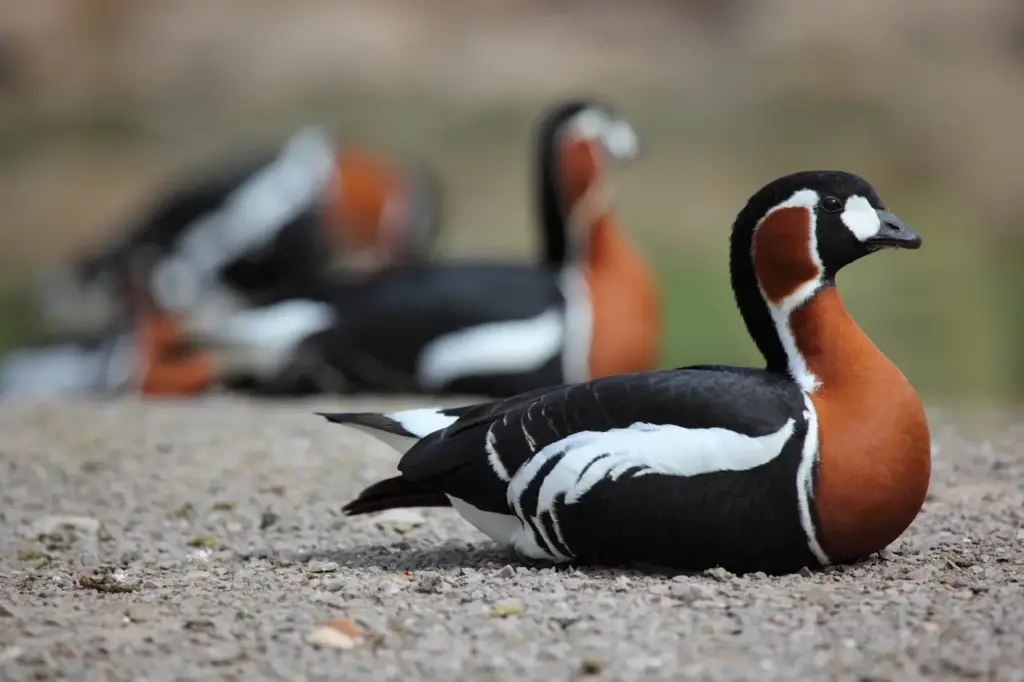
Distribution / Status:
The migratory Red-breasted Geese breed in arctic Europe (Northern Siberia on the Taomyr peninsula) and winter in southeastern Europe (Eastern Romania at the edge of the Black Sea).
This species occasionally visits Great Britain and other western European areas.
Description:
The small Red-breasted Geese has a black, reddish-brown and white plumage; with a mostly black back and top of the head and face, except for the white patches between the eyes and the upper bill, and the distinctive reddish-brown patches on the side of the head that are bordered white.
The neck and chest is brownish-red, followed by a thin white “necklace” and the abdomen is blackish-brown. The “upper pants” are whitish. White bars can be seen on the wings.
Males and females look alike.
Calls / Vocalizations
Their calls are described as a repeated, jerky kik-yoik, kik-yik in flight.
Breeding / Nesting
Red-breasted Geese start breeding when they are about 3 years old. Most nest early June.
They usually nest near cliffs or rock outcrops and always very close to the nests of large birds of prey, such as Peregrine Falcons. This helps to protect them from predators such as the Arctic Fox.
The average clutch consists of 3 – 8 eggs that are incubated for about 25 days.
Diet / Feeding:
Breeding Red-breasted Geese will usually feed on grass leaves and the shoots of cotton-grasses.
In their wintering territories, they usually take winter wheat, barley, maize, and pasture grasses.
They will also eat arid-adapted herbs.
Ducks and geese generally feed on larvae and pupae usually found under rocks, aquatic animals, plant material, seeds, small fish, snails and crabs.
Feeding Ducks and Geese …
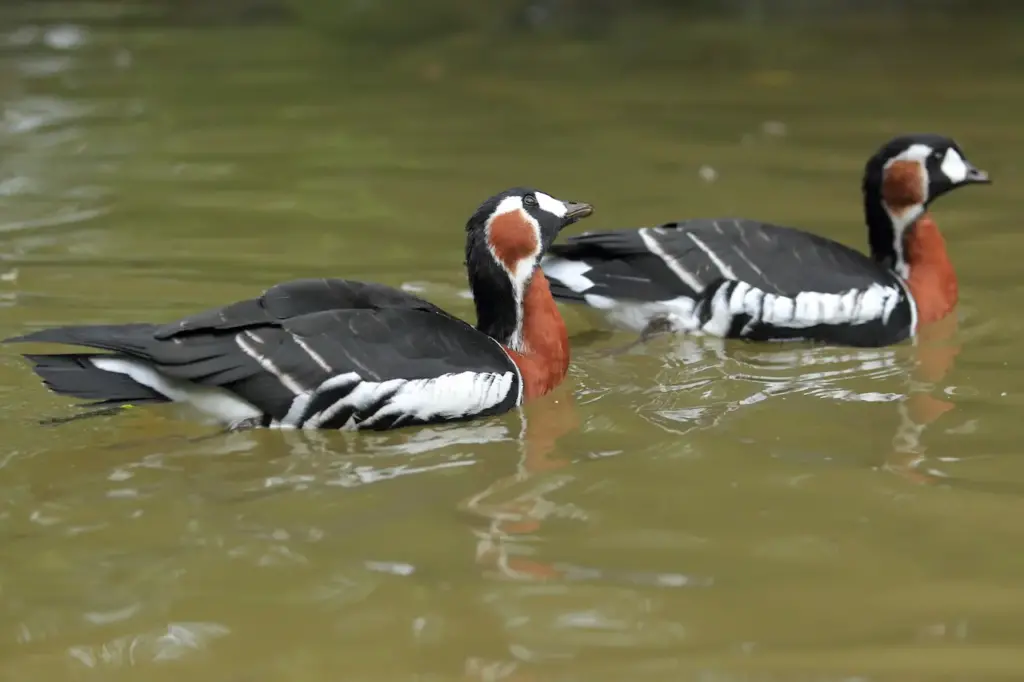
We all enjoy waterfowl and many of us offer them food to encourage them to come over and stay around – and it works! Who doesn’t like an easy meal!
However, the foods that we traditionally feed them at local ponds are utterly unsuitable for them and are likely to cause health problems down the road. Also, there may be local laws against feeding this species of bird – so it’s best to check on that rather than facing consequences at a later stage.
- Foods that can be fed to Ducks, Geese and Swans to survive cold winters and remain healthy when food is scarce in their environment.
Please note that feeding ducks and geese makes them dependent on humans for food, which can result in starvation and possibly death when those feedings stop. If you decide to feed them, please limit the quantity to make sure that they maintain their natural ability to forage for food themselves – providing, of course, that natural food sources are available.

